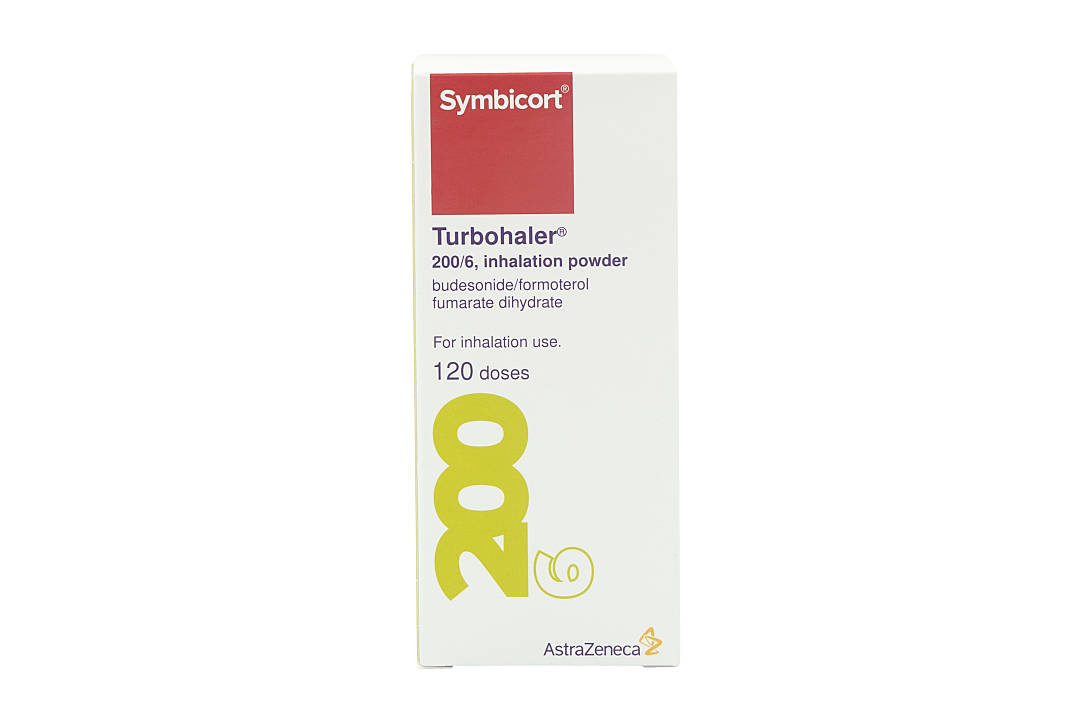Symbicort Turbohaler
Order your Symbicort inhaler online


Symbicort Turbohaler is a preventer asthma inhaler. It is used daily to prevent asthma symptoms and severe attacks. Our prescription service is for patients who have been using Symbicort for at least 3 months.
To place an order, fill in our brief medical questionnaire. You can choose a preferred treatment, such as Symbicort. One of our doctors will check if the medication is suitable for you and issue your prescription to a local pharmacy in Ireland or your home address. Alternatively, you can choose to have your medication delivered directly to your door. A consultation for asthma treatment prescription costs €21.50.



About Symbicort
-
-
Symbicort is an asthma inhaler used in 2 different ways. In some patients, it is prescribed in combination with a blue reliever inhaler, to be used whenever acute symptoms occur. However, Symbicort is sometimes prescribed as both a preventer inhaler and a reliever inhaler. In this case, the patient uses the inhaler daily to prevent symptoms but also uses it to relieve acute symptoms.
-
-
Symbicort contains a combination of the 2 ingredients, budesonide and formoterol fumarate. Budesonide is a corticosteroid which acts as an anti-inflammatory while also reducing the swelling and narrowing in your airways which causes asthma symptoms. Formoterol belongs to a group of medicines called long-acting bronchodilators. As the name implies, it dilates the airways by relaxing the muscles in your airways.
-
-
The Symbicort Turbohaler needs to be prepared before the first use. In order to prime your inhaler for the first use, remove the inhaler cover and hold the turbohaler upright. Turn the red grip as far as you can in one direction, then turn it as far as it will go in the opposite direction. Once you have heard a clicking noise, repeat the process of turning the red grip in both directions. After this, the Turbohaler is ready for the first inhalation.
It is important that you know how to use your Symbicort Turbohaler correctly. If you have any doubts as to how you should use it, speak to a pharmacist or doctor for advice. If you do not use it correctly you might not inhale the correct dose, which leaves you at risk of asthma symptoms or a dangerous asthma attack.
To take an inhalation, follow these steps:
- Unscrew the lid and take it off (you may hear a rattling noise as you remove the lid).
- Hold the inhaler upright. The red grip should point to the floor.
- Load your inhaler with 1 dose. In order to do this, you need to turn the red grip as far as it will go in one direction, then in the other direction. You will hear a clicking sound which indicates when the inhaler is loaded. Do not hold the mouthpiece while loading the inhaler.
- Breathe out gently. In order to avoid breathing into the inhaler, hold it away from you while you breathe out.
- Put the mouthpiece between your teeth. Do not bite or chew the mouthpiece. Inhale deeply, remove the mouthpiece and breathe out slowly.
Repeat these steps for every inhalation you need to take. You should clean your inhaler once a week, using a dry tissue to wipe the mouthpiece. Do not use water or detergent to clean your Symbicort Turbohaler.
-
-
The dose indicator on the side of the inhaler shows how many doses are left. When there are 10 or less doses left, the background of the indicator turns red. When the 0 on the red background appears in the middle of the window, your inhaler is empty and you need to start a new one. The turbohaler will still make a clicking noise when you try to load it – this does not mean there is any powder left inside.
-
-
How often you need to use Symbicort depends on whether you are using it as a standalone treatment or in combination with a blue reliever inhaler. Your GP will tell you how often you need to use Symbicort and how many inhalations you are required to take each time. Patients who are also using a reliever inhaler to manage acute symptoms usually use Symbicort twice a day and take 1 or 2 inhalations each time.
Patients who use Symbicort to relieve as well as prevent symptoms use the inhaler twice a day, taking 1 to 2 inhalations every time. In addition, they use their inhaler whenever symptoms occur. If you find that the frequency with which you encounter symptoms increases, you must speak to your doctor who may decide to review your treatment plan.
-
-
Symbicort Turbohaler contains the two active ingredients budesonide and formoterol fumarate. Each dose contains 100 or 200 micrograms of budesonide and 6 micrograms of formoterol. Symbicort also contains lactose monohydrate.
-
-
Symbicort may cause side effects in some patients.
Common Symbicort side effects include:
- palpitations
- trembling and shaking
- headache
- sore throat, hoarse voice and coughing
- oral thrush (a fungal infection inside the mouth)
Uncommon Symbicort side effects include:
- restlessness
- fast heartbeat
- feeling nervous or agitated
- sleep problems
- bruising
- dizziness
- nausea
- muscle cramps
For a full list of all possible risks and side effects, read the Symbicort patient leaflet that comes with your medicine.
Stop using Symbicort if you experience:
- difficulty breathing
- facial swellings
- hives
- wheezing and shortness of breath immediately after inhalation
- feeling faint
If you experience any of these side effects, speak to your doctor immediately.
-
-
The ingredients in the Symbicort inhaler can interact with other types of medication, including:
- Mono-Amine Oxidase Inhibitors (also known as MAOIs)
- beta-blockers (used to treat high blood pressure)
- medicines for an uneven heartbeat
- medicines used to treat heart failure
- medications for Parkinson’s disease
- diuretics used to treat high blood pressure
- steroid tablets (also used for asthma treatment)
- xanthine medicines (such as theophylline or aminophylline)
- other bronchodilators (including salbutamol)
- phenothiazine medicines
- tricyclic anti-depressants
- medications for thyroid problems
- medicines used for the treatment of HIV
- certain medications used to treat infections (for example, itraconazole, ketoconazole, voriconazole, clarithromycin, Posaconazole, and telithromycin)
-
-
Do not use Symbicort if you are allergic to budesonide, formoterol, lactose or any other ingredient in Symbicort Turbohaler.
Tell your doctor if you:
- are diabetic
- have a lung infection
- have low levels of potassium in your blood
- suffer from high blood pressure or a heart problem
- have problems with your thyroid or adrenal glands
- have severe liver problems

Dr Kathryn Basford is an IMC and GMC registered GP who works with our Irish team here at ZAVA. She graduated from the University of Manchester and completed her GP training at Whipps Cross Hospital in London.
Meet our doctorsLast reviewed: 06 Jun 2023
